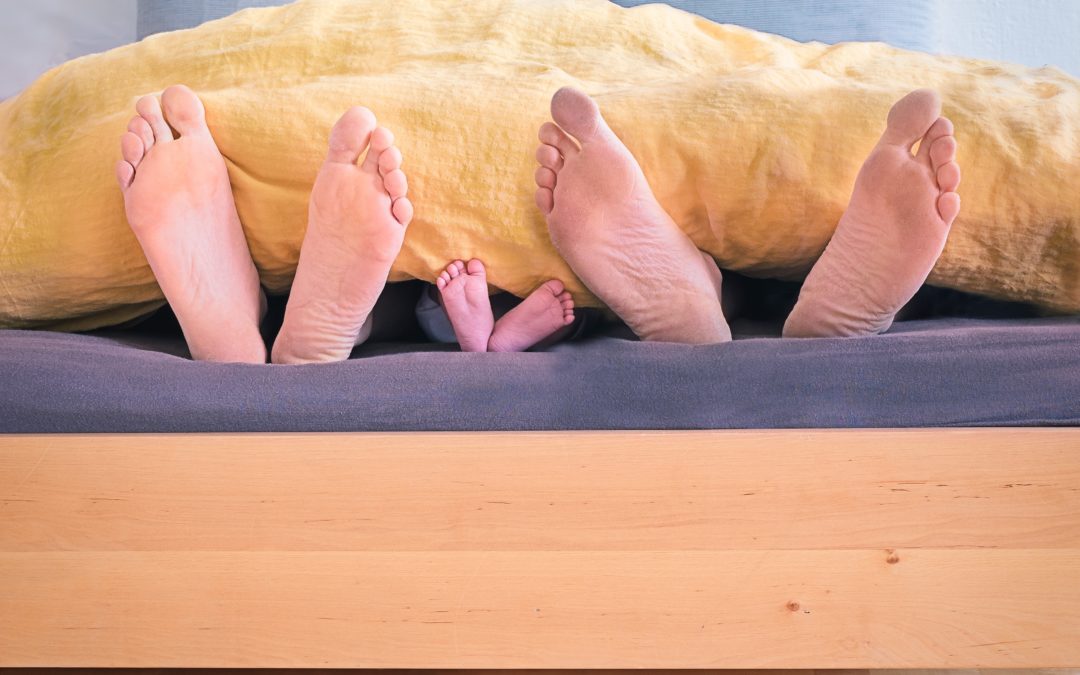
by Chris Easton | Aug 24, 2018 | Foot and Ankle
In my previous blog post I wrote about common foot issues. In this post, I’d like to talk about what you can begin to do about it.
First and foremost is to R.I.C.E. Rest, Ice, Compress (think ACE wrap) and Elevate. That’s the standard for what to do when we’re hurt, but the main two are rest and ice. The inflammation has to be controlled first and foremost. If it stays inflamed, you cannot move into the healing phase.
Next is to find out if you’re lacking range of motion. Sit down with your legs out straight. Leaving your heels down pull your toes and feet back toward your knees. If you can’t pull them back at least 10 degrees and preferably 15-20 (the medical term is dorsiflexion), you’ll need to begin stretching your calves. I treat a great many people that can’t move past 0! That means their foot is at a 90 degree angle to the leg and they are not able to pull back at all. If you’re lacking motion in your ankles, it puts extra stresses on your foot (and on up the chain into your knees and even higher..hello shin splints, hello lower back pain).
Third, consider splinting at night. There is a picture of one on the products page of my website (I don’t sell them, amazon.com does). On the whole I’m not a huge fan of braces and splints, but there can be benefit to a gentle night splint that holds your ankle at a 90 degree angle (or 0 degrees of dorsiflexion). The benefit is there because as most people sleep their feet point at a downward angle. This means your Achilles tendon is shortened and the plantar fascia on the bottom of the foot is shortened. Sleep time is healing time. Guess who is healing with those tissues in a shortened position? Yep, and now you know why plantar fasciitis hurts so much first thing in the morning. The plantar fascia has been in a relaxed position and has begun healing….and then you take that first step. The tissue stretching back out suddenly is that knifelike pain you get with those first 10-15 steps. A night splint will help those tissues heal in a more elongated position than you normally sleep in and after a few weeks the pain will begin to lessen.
Lastly make sure that when you’re walking your feet are pointed straight ahead. 2. Make sure you’re walking heel to toe. And 3. Make sure you’re pushing off with your big toe! That big toe extending and pushing off is paramount to loading up your arch. I’ll expand further in an upcoming blog post, (if you like homework do a google search for the “windlass mechanism of the foot”)but an active arch is what locks in the bones of your foot, gives you something firm to push off of and dissipates forces. There is a reason bridges and doorways have been arched for thousands of years. Architects stole the design from our feet. Even 5-10 degrees of outward angle when you’re walking is enough to collapse your arch.(Medically we call that overpronation) Again, I’ll expand more on this later, but please make sure your feet point straight ahead when you’re walking. I mentioned Tarsal Tunnel Syndrome in part one and I’ll expand briefly. Sounds a lot like Carpal Tunnel and it is. Most commonly caused by overpronation or walking with a collapsed arch. This tugs on the inside of the ankle. If you’re taking the recommended 10,000 steps a day, that 5000 stressful tugs. Easy was to tell if the nerves protected by the tarsal tunnel are irritated is to sit down and cross the painful side on your knee. This will expose the inside of the ankle. Now with gentle to moderate force tap your index finger in the hollow between your ankle bone and heel. Like you’ve seen someone do to a soda can before they open it. If you get little electric shocks shooting into the foot, it’s irritated. So please try the above techniques and if it’s not helping, please go to the podiatrist or your physical therapist.
I hope you’ve found this information helpful. If you’ve implemented these techniques and aren’t getting any relief please see a podiatrist or a physical therapist for a “shoes off” evaluation of your walking (a gait analysis). The foot is incredibly complex and most foot issues are multidimensional. If you have questions just click here to contact me.

by Chris Easton | Aug 23, 2018 | Foot and Ankle
With this blog post I’d like to address some of the most common foot and ankle problems that physical therapists and foot and ankle (podiatric) doctors encounter. The foot and the foot and ankle complex are truly amazing structures. So much so that Leonardo Da Vinci (1452–1519) wrote the following: “The human foot is a masterpiece of engineering and a work of art.”
It truly is. There are 26 bones in the foot. Since we have 206 bones in our bodies, that means that almost 12% of all the bones in our body are in our foot. Oops, wait a minute, that’s only one foot. If we take both feet, thats 52 bones. I’ll spare you the math, but 25% of the bones in our body are in our feet. ***Let that sink in for a second.*** And all 52 are working in concert to support everything you throw at it during the day. (…and I didn’t mention all the ligaments, tendons and muscles that help support and control our feet and ankles)
No wonder podiatrists stay busy. With this much going on there are bound to be problems. In talking with podiatrists the most common issues they treat (and refer to PT) are:
Plantar Fasciitis (felt on the bottom of the foot, commonly under the heel)
Tarsal Tunnel Syndrome (this can mimic plantar fasciitis very closely)
Achilles Tendonitis (felt on the back of the leg/heel)
Posterior Tibial Tendonitis (felt on the inside of the ankle)
Peroneal Tendonitis (felt on the outside of the ankle)
Chronic Ankle Sprains (Rolling of the ankles)
Of course there are many more, and I intentionally left out other foot issues podiatrists treat such as nail fungus, gout, ingrown toenails, diabetic neuropathy (pain, burning and tingling of the feet) and Charcot foot.
You’ll notice most of the above issues end in “itis.” That’s medical jargon for inflamed. Most “itis’s” are caused by overuse, imbalance, inadequate range of motion or lack of strength. (Or a combo of these). Great, so what should I do about it? That will be addressed in part two.

by Chris Easton | Aug 1, 2018 | Knee
***This blog will be expanded for a revision of my knee replacement book to include a chapter on partial knee replacements vs total knee replacements as well as a chapter on the future of high tech in the operating room. Image guided and robotically assisted surgery, pressure sensitive initial components to assist with proper placement and gapping, etc…The following is a preview…***
One thing I love about my profession is that it’s constantly evolving and moving forward. Research tells us what best practices are, continuing education classes bring thought leaders on various techniques and theories into a classroom style teaching atmosphere. In Oklahoma I’m required to have 40 hours of continuing education every two years to maintain my PT licensure. I’m not going to say I enjoy the cost or that I enjoy giving up a weekend to attend a course, but I’ve never left one without learning a great deal. I always leave courses with more tools in my toolbox, and that is always a benefit to the people I get to work with.
Up until two years ago I would never have recommended a partial knee replacement. I don’t know the exact percentages, but almost every patient I worked with that had a partial, within 1-2 years, would undergo a revision to a total knee replacement. That means more opportunity for infection. It also means more bone loss and scar tissue as the old partial has to be removed down to good healthy bone for the new total knee prosthetic pieces. It also means more pain as clients would have to start their rehab all over again. Why recommend something that would likely result in twice the surgery, or worse?
So what happened two years ago? I went to an orthopedic symposium put on by a local hospital group. Several orthopedic surgeons spoke on varying topics from ACL reconstruction to minimally invasive spinal surgery. One of the surgeons speaking at the symposium performs partial knee replacements via something called Makoplasty. Dr. Paul Jacob performs these regularly and spoke to the group for an hour on Mako assisted partial knee and total hip replacements. Currently surgeons are performing Mako on partial knees, total knees and total hips.
Without getting too in depth, what sets Mako apart is that it is an image driven procedure. That means you have a CAT scan prior to surgery and the procedure is totally based on your anatomy. To indirectly quote him, We make the components fit the patients anatomy, not making the patient fit the components. In not so many words, the fit is much closer to your specific and normal anatomy. The end result of a Mako partial knee replacement is that it functions very much like your normal anatomy and is dialed down to the millimeter.
Briefly I’m going to list a few advantages and disadvantages to a partial knee replacement performed via Makoplasty. The list is indeed longer for both, but these are the high points.
Advantages:
- The fit is much closer to your normal anatomy. Much closer!
- All knee ligaments (ACL, PCL, MCL and LCL) remain intact.
- The meniscus on the opposite side remains intact. The vast majority of partial knees are performed on the inside section of the knee (medial side), so you would retain your lateral meniscus.
- The recovery is significantly faster. Mere weeks instead of months.
Disadvantages:
- Radiation. You are exposed to radiation due to the fact that you undergo CAT scanning.
- Possible pinsite fractures. (rare) During the procedure a metal pin is drilled into the shin bone (this is another way they make it extremely accurate), but a hole in the bone takes time to heal and can potentially weaken your shin bone, increasing the potential for fracture.
- Possible incision injuries. People are recovering so much faster that there have been instances of wound dehiscence (incision coming open) due to people being able to push further, too soon following surgery.
The bottom line is this is a decision that you and your surgeon have to make. Mako trained surgeons have a VERY specific set of criteria to be met before someone is even considered for a Mako partial. Including imaging, area of pain complaints, age of the patient, and other factors. No surgeon wants to perform a partial, only to have to go back within a year or two to convert it to a total knee. As noted above, until 2 years ago I would have never recommended a partial knee replacement, but due to advances in technique and improved tech in the OR, I wouldn’t hesitate to recommend a MAKO partial knee to anyone who meets the criteria.
If you have questions or need further information please reach out to me. I’d love to help.
Best regards and God bless,
Chris



